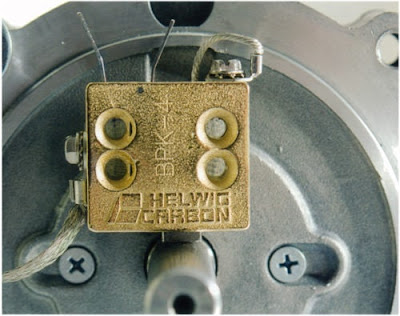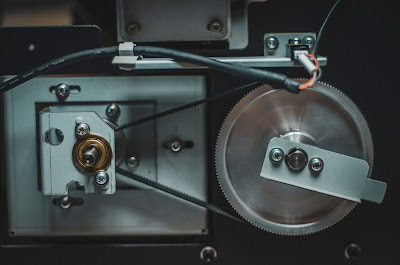Fitting the inner ring to the shaft
When it comes to assembling machinery, one of the most important factors to consider is how the components of the machine fit together. In particular, fitting the inner ring to the shaft is a process that requires precision and attention to detail. The inner ring is a critical component of many machines, serving as a bearing that supports the rotating shaft. If the inner ring is not properly installed or is not the correct size, it can cause significant problems with the machine's operation, including increased friction and wear on the bearings. In this blog post, we will explore the process of fitting the inner ring to the shaft in detail, discussing the tools and techniques required for a successful installation. We will also walk through common issues that can arise during the process and offer tips to help you avoid them. Whether you are an experienced machinist or a novice just getting started in the field, the information in this post will be valuable in improving your skills and ensuring that your machines operate smoothly and efficiently.
1. Check the shaft and bore dimensions to ensure they are accurately measured.
Fitting the inner ring to the shaft requires careful attention to detail in order to prevent any issues during operation. One of the primary steps in ensuring a proper fit is accurately measuring both the shaft and bore dimensions. It is crucial to check that the measurements match the specifications outlined in the manufacturer's instructions or engineering drawings. Any differences in the dimensions can lead to improper fitting, which can have a profound impact on the overall performance of the machinery. Thus, it is recommended that proper measurement tools, such as micrometers and depth gauges, are utilized during the measurement process to achieve accurate and reliable measurements. By taking the necessary steps to ensure proper fitting, you can maximize the efficiency and longevity of your equipment.
2. Clean both the shaft and bore before inserting the inner ring.
When fitting an inner ring to a shaft, it's important to follow certain steps to ensure a proper fit. Step two of this process is to clean both the shaft and bore before inserting the inner ring. Cleaning the shaft and bore removes any debris, dust, or dirt that may have accumulated, which could interfere with the fit of the inner ring. A clean surface also promotes better adhesion of the inner ring to the shaft, improving the stability and longevity of the fitted component. It's important to use proper cleaning agents and materials to avoid damaging either component, and to thoroughly dry both the shaft and bore before inserting the inner ring. Following this step in the fitting process will improve the overall performance and reliability of the assembled part.
3. Heat up the inner ring to allow for easier fitting onto the shaft.
In order to properly fit the inner ring onto the shaft, it may be necessary to heat up the inner ring. This can help to expand the ring, allowing for easier fitting onto the shaft. To heat up the inner ring, it is important to use caution and the correct tools to avoid causing damage to the ring. One method of heating the inner ring involves using a heat gun, which should be set to a low to medium heat setting. The inner ring should be held at a safe distance from the heat source, and continuously turned to ensure even heating. Once the inner ring has been sufficiently heated, it is important to immediately fit it onto the shaft before it cools and contracts back to its original size. With proper heating and fitting techniques, the inner ring can be securely attached to the shaft for optimal performance.
4. Use a soft hammer to gently tap the ring onto the shaft, making sure that it is aligned properly.
Fitting the inner ring to the shaft is a critical step in the installation process, and it is important to follow the correct procedure to ensure optimal results. After selecting the appropriate inner ring for the shaft, the next step is to attach it securely. Using a soft hammer, carefully tap the ring onto the shaft, being sure to align it accurately to prevent any misalignment or damage. The use of excessive force could cause damage or deformation to the ring or shaft, which could lead to operational issues or safety concerns. Therefore, it is important to use a soft hammer and handle the ring with care while fitting it onto the shaft. Once the ring is aligned properly, it should be securely fastened, ready to deliver the expected performance.
5. Check the fit by rotating the ring on the shaft and ensuring there is no wobbling or slipping.
Fitting the inner ring to the shaft is an essential step in the process of assembling machines and equipment. It is important to ensure a proper fit between the inner ring and the shaft to prevent any malfunction or damage to the equipment. One of the key steps in this process is to check the fit after installation. To do this, rotate the ring on the shaft and ensure there is no wobbling or slipping. It is crucial to ensure that there is a uniform amount of pressure applied from every side to ensure that the fit is secure. Any slight discrepancies in the fit can cause serious consequences like vibrations or excessive wear and tear, which can eventually lead to equipment failure or damage. Therefore, it is crucial to take adequate time to check the fit correctly and address any discrepancies during the assembly process.
In conclusion, fitting the inner ring to the shaft is a vital process that should be performed with care and precision. It is essential to select the correct fit to ensure proper alignment, minimize vibration and avoid premature failures. Selecting the right tolerance and clearance can be challenging, but understanding the basic principles and the factors that influence fits can help in making the right decision. Proper installation, regular maintenance, and monitoring the equipment can help ensure that the inner ring and shaft perform optimally, increasing the lifespan of your machinery.




Megjegyzések
Megjegyzés küldése